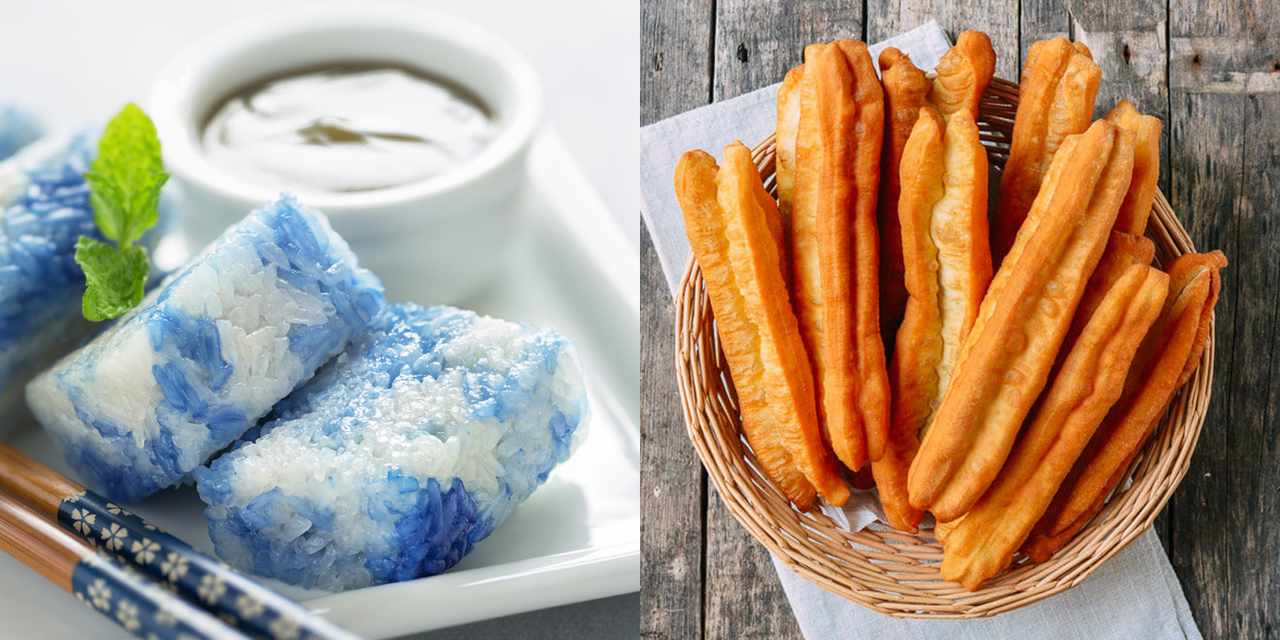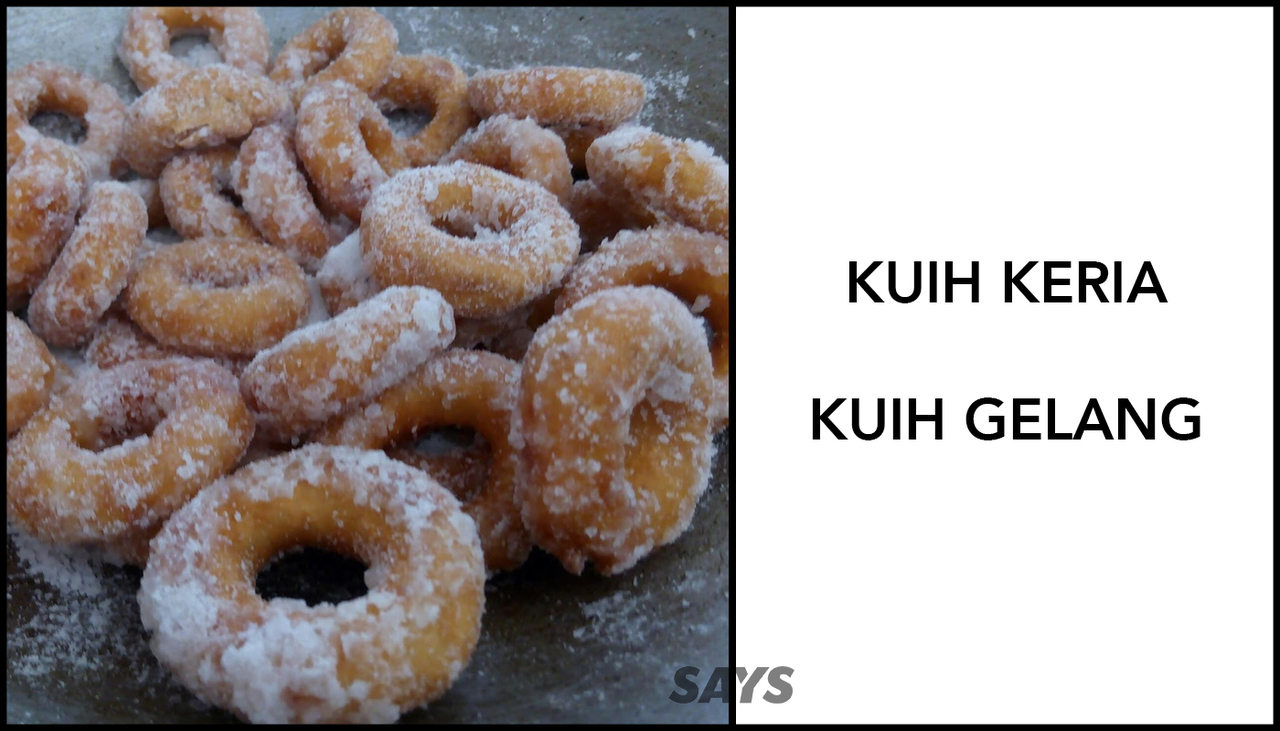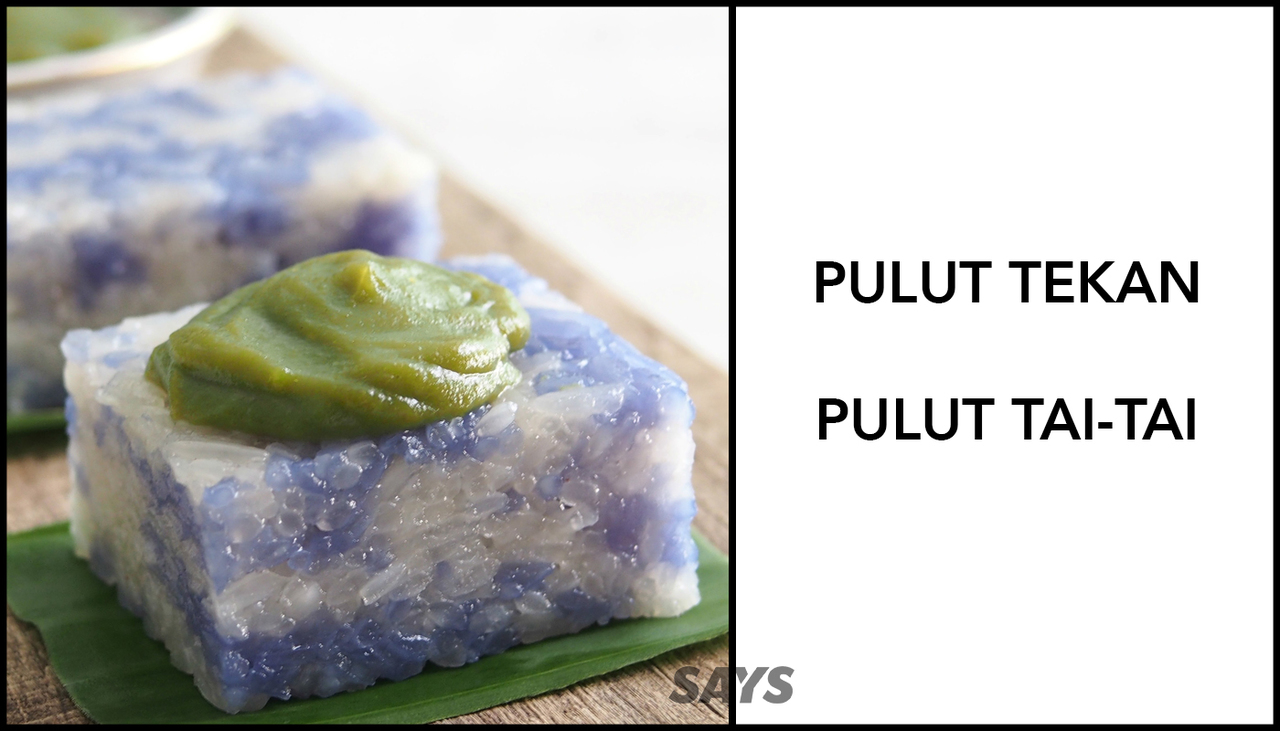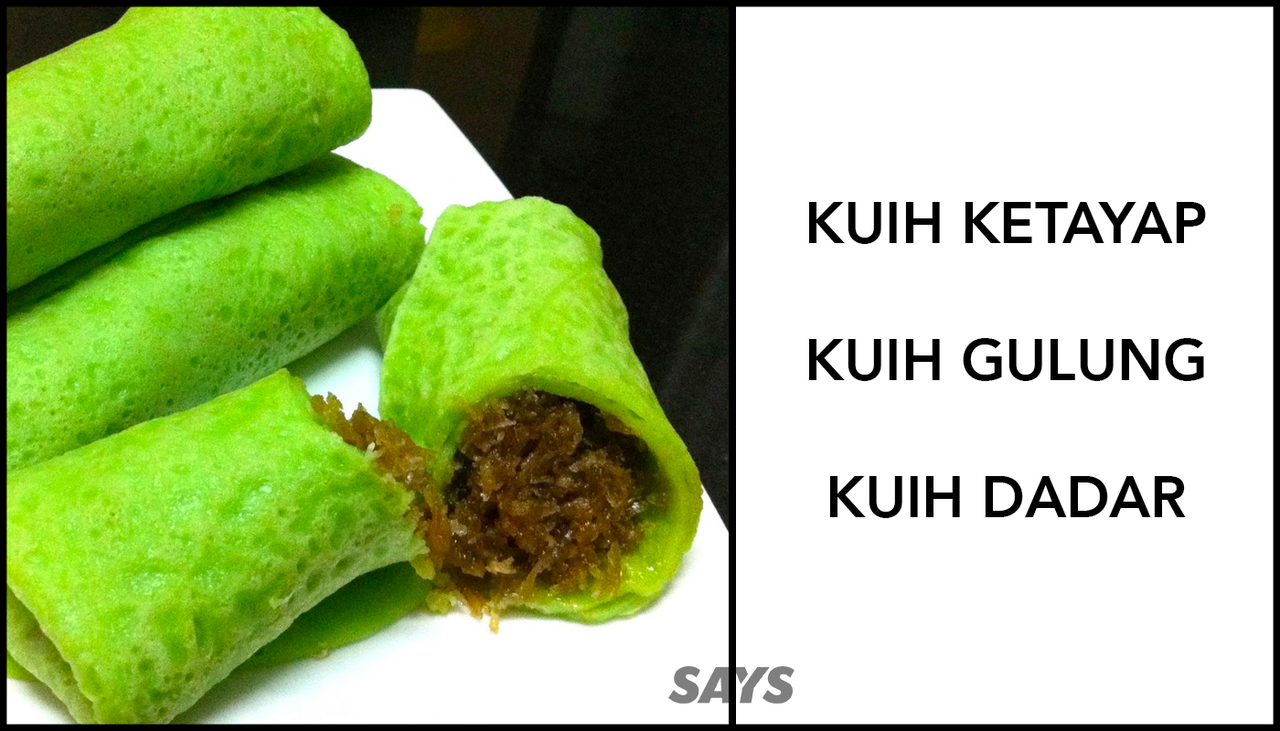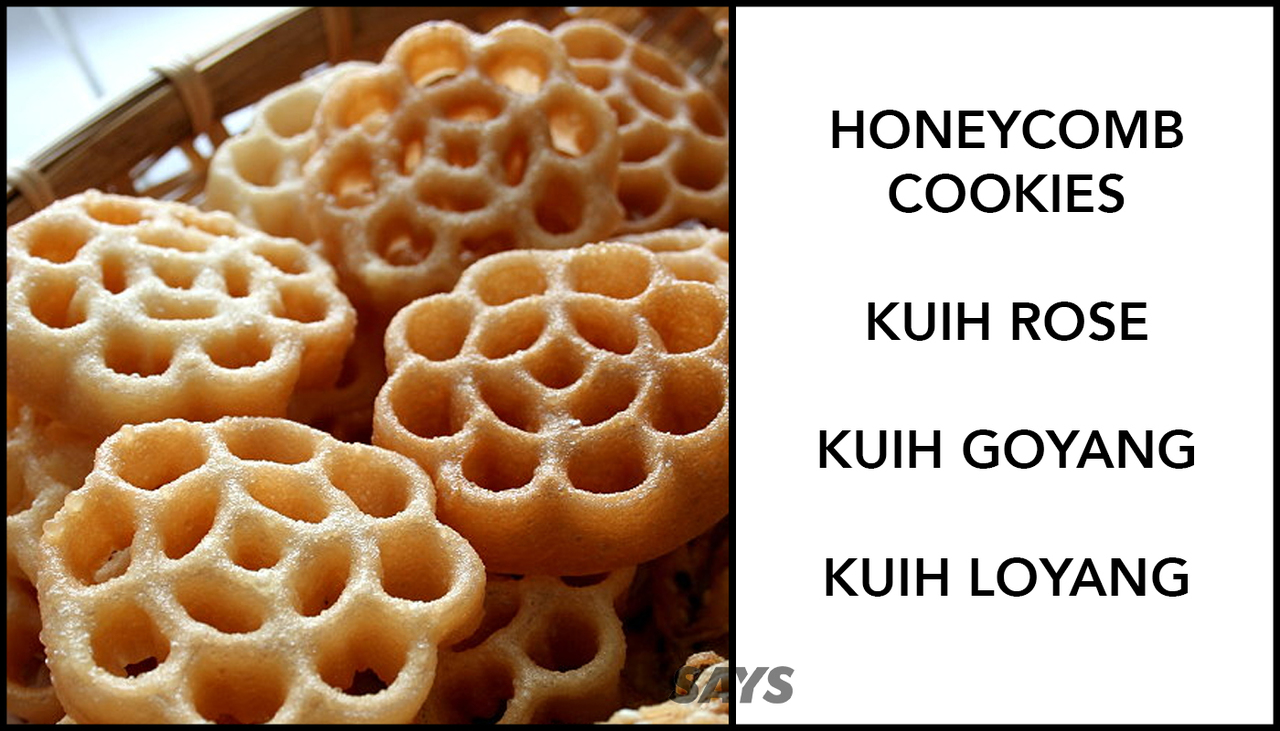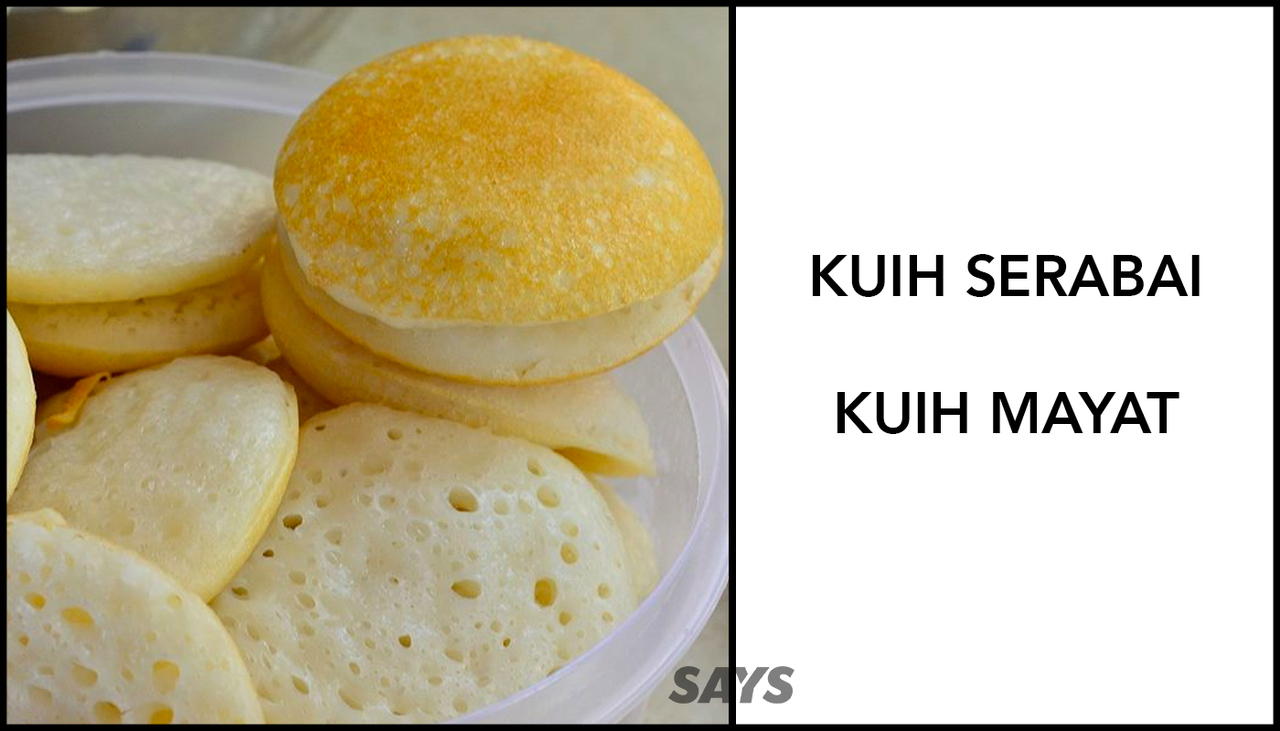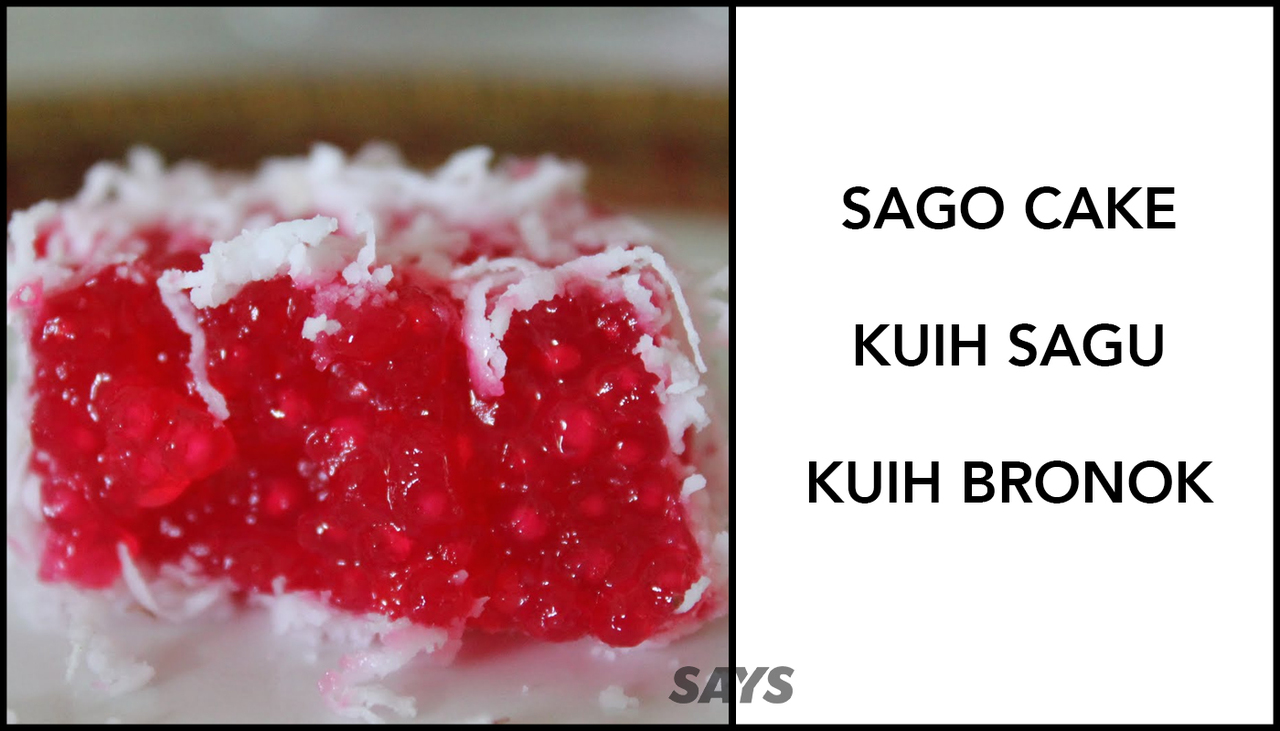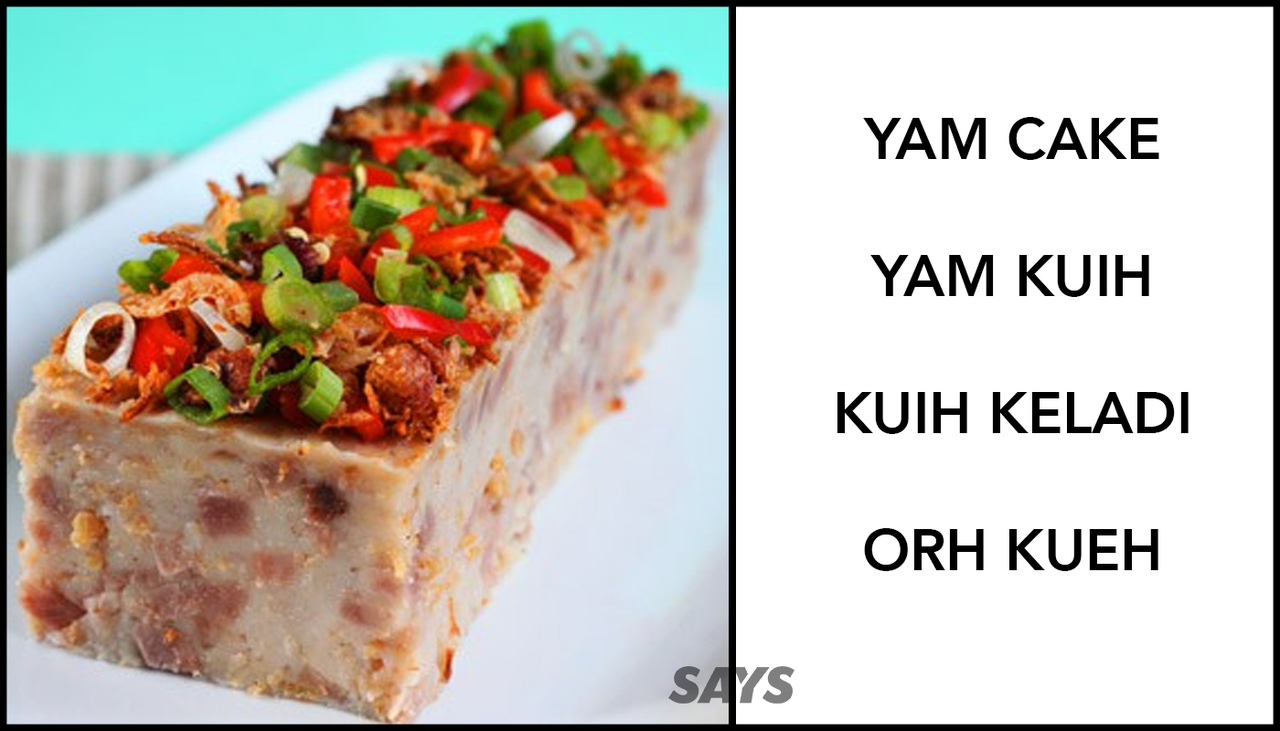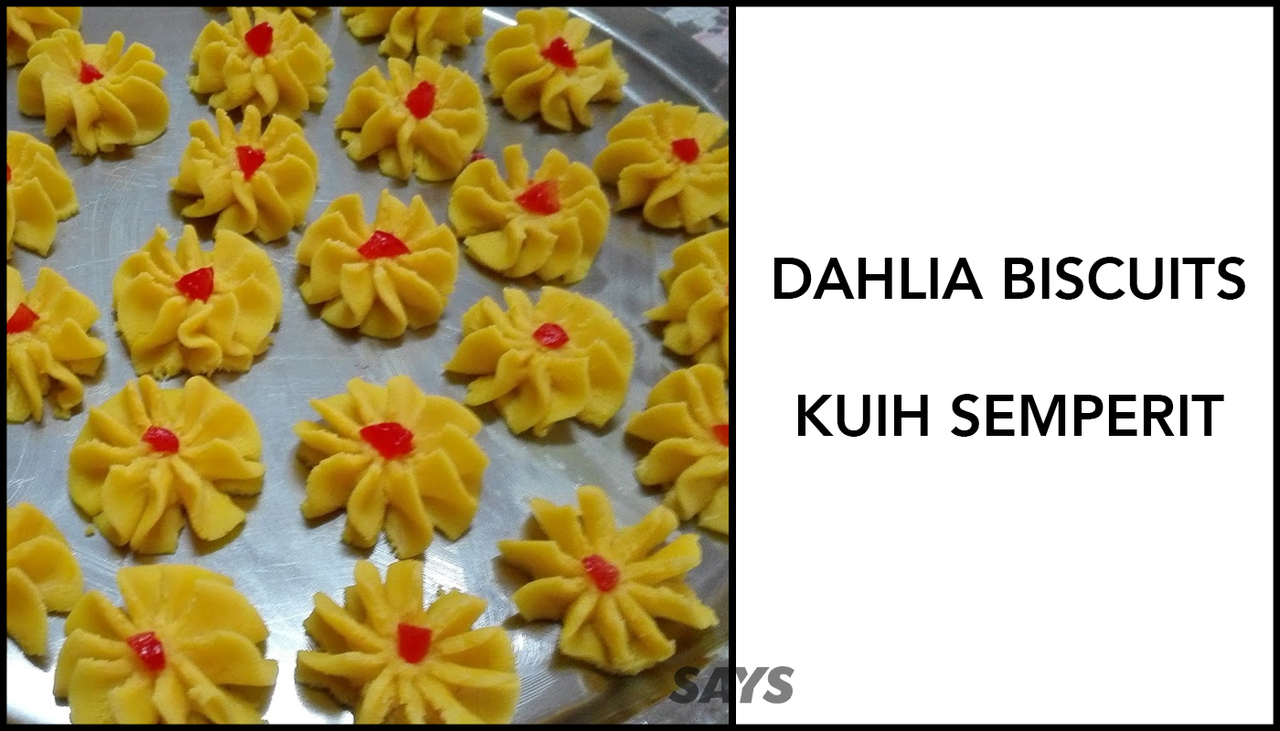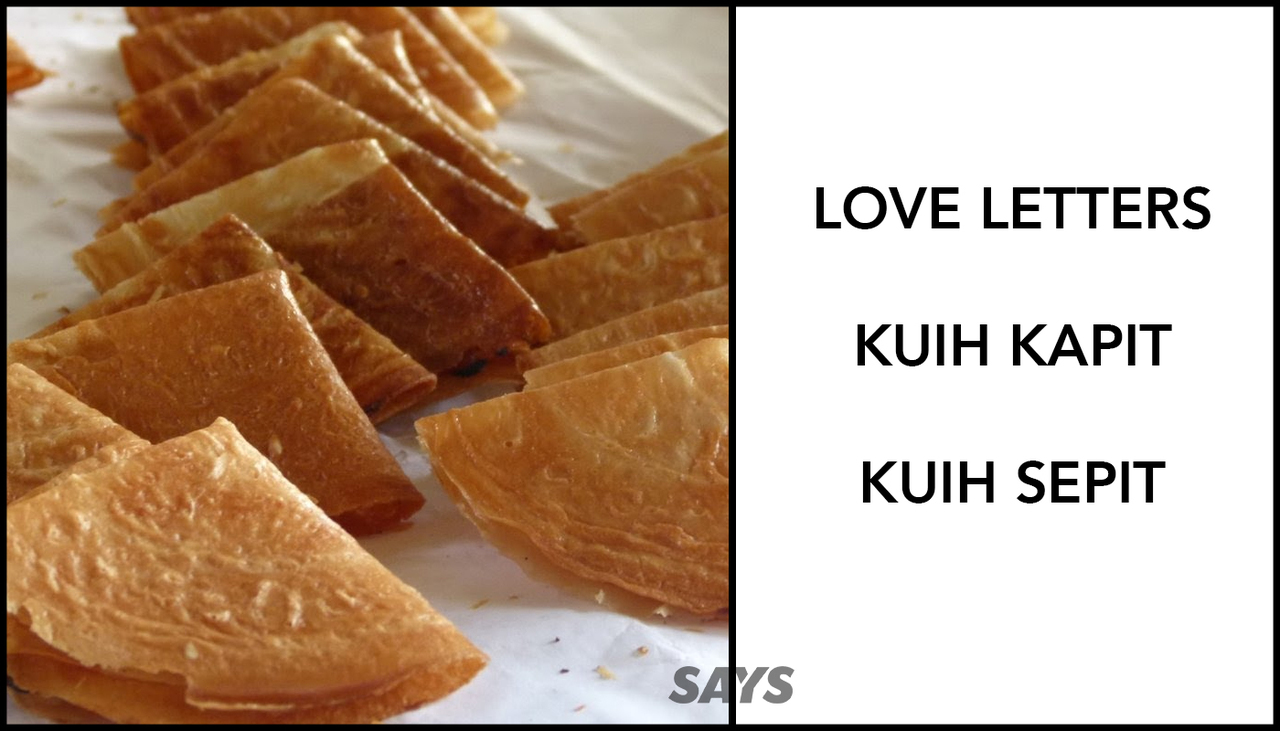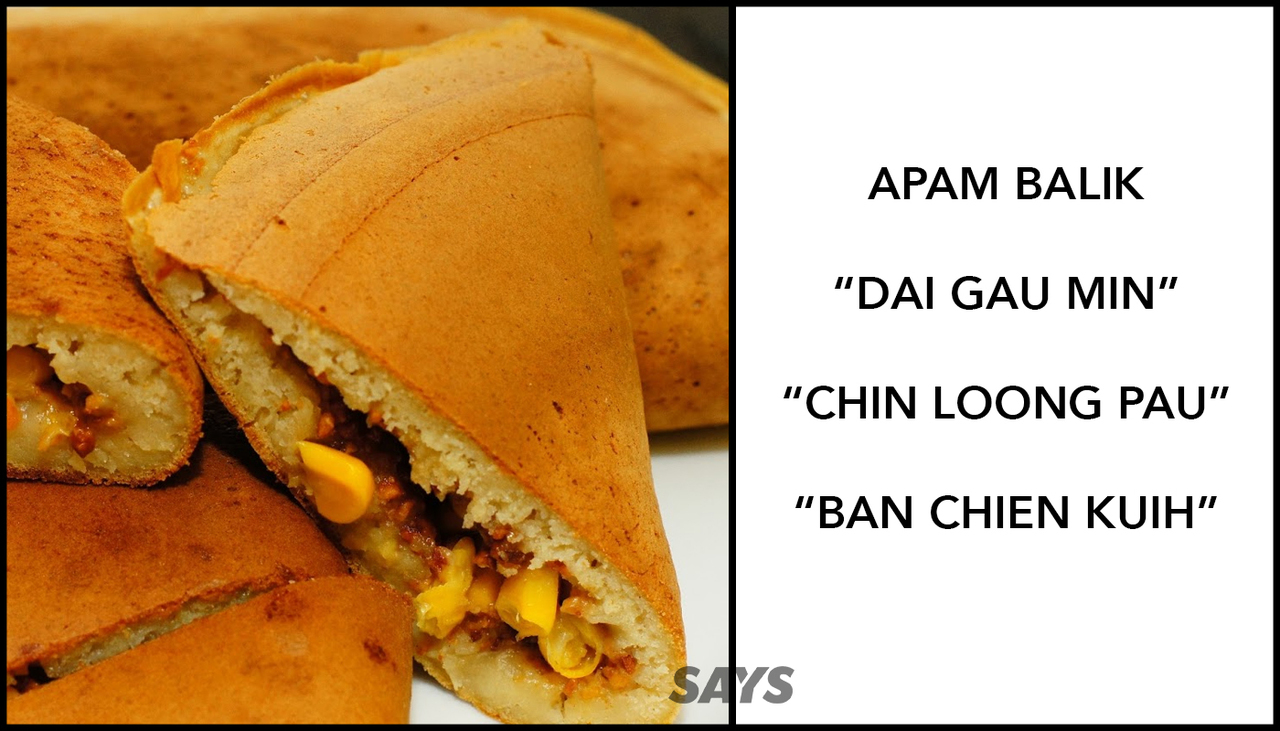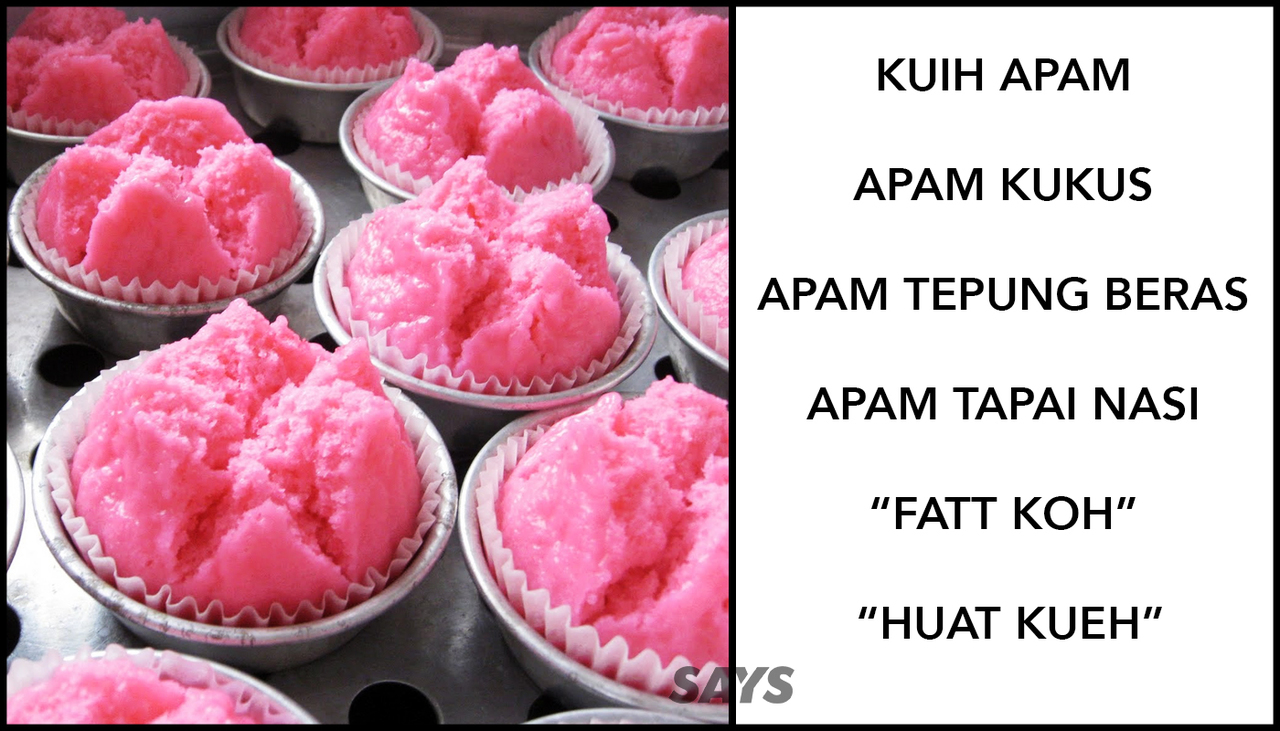15 Local Types Of Food That Have Totally Different Names Across Malaysia
Food that we love that's known by several different names.
Have you ever eaten something and found out that the same food is known to another person by a different name?
Take for instance, 'rojak mamak'. This dish made from the combination of fried dough fritters, bean curds, egg, shredded cucumber, and sengkuang (yam bean), is no doubt a local favourite for the young and old.
Interestingly, some people in Malaysia refer to this as 'pasembur' instead of rojak mamak.
Here are 15 kuih-muih and snacks Malaysians love and the different names they're known as:
1. These sweet potato doughnuts you can easily find at the pasar pagi
'Kuih keria' is a yummy Malaysian doughnut that is made from deep-fried sweet potato batter that's coated with a simple sugar syrup or sprinkled with powdered sugar.
It is also known as 'kuih gelang' because the dough is rolled and shaped like a ring or a bracelet (gelang).
2. Our breakfast staple
'You char kway' (in Cantonese) or 'you tiao' (in Mandarin) is the popular name for this local favourite food that we often have for breakfast or tea-time. You char kway is the Cantonese term for it that literally translates into "oil-fried-devil".
It is also popularly called as 'cakoi' among the local Malay community.
Residents in the northern region of Peninsular Malaysia may refer to this snack as 'patongko', which is what you char kway is commonly known as in Thailand.
3. Those lovely bite-sized sweet treats that burst in your mouth
'Onde-onde' is said to have originated from Melaka, which is why this traditional kuih is also known as 'buah melaka'.
It is said that residents in Negeri Sembilan often call onde-onde as 'kelepong'.
4. This sweet, coconutty dessert that's perfect for tea time
'Putu piring' is a round-shaped traditional steamed rice flour snack that is usually filled with gula melaka (caramelised palm sugar).
The same ingredients are used to prepare 'putu mayam' (or Idiyappam in Tamil) but the rice flour is shaped into the form of noodles while the sweetened toppings are served on the side.
It's also referred to as 'kueh tutu' in the southern parts of Malaysia, and in Singapore.
5. This local sweetmeat that's available all year round
'Kuih denderam' or 'kuih peneram', is commonly known as 'kuih telinga keling' among the older generations but the name is used less often nowadays. This is because the term "keling" has been used with a derogatory connotation to refer to ethnic Indians.
It is believed that the kuih is named 'telinga keling' because of the shape of it which looks like an ear and also because the kuih was often sold by ethnic Indians in the olden days.
6. One of the most popular Nyonya desserts in the country
This blue glutinous rice cake served with kaya is often called as 'pulut tekan' which literally means "pressed glutinous rice".
The unique blue stain comes from a flower known as 'bunga telang' (butterfly-pea flower).
7. This dessert that's pillowy soft on the outside with the classic sugary coconut filling
'Kuih ketayap' is a pandan-flavoured crepe filled with shredded coconut and gula melaka.
It's also known as 'kuih gulung' because of its obvious physical attribute - a rolled crepe.
Meanwhile, another name for it is, 'kuih dadar', which translates into "pancake kuih".
8. Our favourite festive cookie
'Honeycomb cookies' or popularly known as 'kuih rose' is a crunchy addictive snack that bears a close resemblance to honeycomb or a rose, which explains how it got its name.
Some people call it 'kuih goyang' because of how it is made - referring to the act of jiggling (goyang) the mould to get the biscuit to drop into the frying pan.
It is believed that it is also known as 'kuih loyang' because the mould used to shape the cookie is usually made out of metal brass (logam loyang).
9. This traditional kuih that is usually made using leftover rice and santan
'Kuih serabai' literally means messy in the northern Malay dialect.
According to this article by Sinar Harian, some people in Penang call this local delicacy as 'kuih mayat', probably due to the fact that it was commonly served at funerals.
10. For those of us who like our kuih a little soft and chewy
Sago cake, as the name suggests, is made with little sago balls or tapioca pearls, and is often eaten with shredded coconut.
It is also known as 'kuih sagu' among the local Malay community, although it is more popularly known as 'kuih bronok' in the east coast states of Peninsular Malaysia.
11. This good ol' delicious steamed cake
'Yam cake' or 'yam kuih' is basically a steamed kuih made from yam pieces and rice flour. People usually steam them together with some chopped meat and dried prawns for extra flavour. It is usually eaten with chilli sauce or sweet sauce ('thim jeong') during breakfast or tea time.
Yam cake is also known as 'orh kueh' among Hokkien-speaking Malaysians.
12. These heavenly melt-in-the-mouth biscuits
'Kuih semperit' are custard butter cookies that are traditionally served during Hari Raya Aidilfitri. However, it is not unusual to find it during other festive seasons like Chinese New Year or even Christmas nowadays.
Kuih semperit is also known as Dahlia biscuits because it looks like the Dahlia flower.
13. This favourite childhood treat!
Many Malaysians grew up eating rolled biscuit that is known to us as 'love letters' or 'kuih kapit'.
Kuih kapit got its name from the way it is made, whereby a thin batter made of coconut milk, rice and tapioca flour, sugar and eggs is traditionally baked over charcoal and the cookie takes form when it is compressed (kapit) in the mould.
It's also known as 'kuih sepit' because of the batter that is wedged (disepit) between two round iron plates that are held together by thongs.
14. This local pancake that has been listed as one of the heritage food in Malaysia by the Department of National Heritage
Apam balik is basically pancake that is folded over – hence its name.
It is known as 'chin loong pau' among Cantonese-speaking Malaysians that are based in the Klang Valley region. Other Cantonese-speaking locals may call it 'dai gau min' instead.
Meanwhile, it's also called as 'ban chien kuih' by those who speak Hokkien.
Generally, there are two types of apam balik - the fluffy and thick version while the other with a thin and crispy crust - but both usually have the same peanut filling.
Most Penangites might know the former as ban chien kuih and the latter (plain ones, without peanut fillings) as apam balik.
15. Those steamed rice cakes that we used to eat for breakfast when we were kids
This local steamed cupcake-sized dessert made from rice flour comes with many names because there are many ways to make the cake.
From using wheat flour, eggs, and ice cream soda to using rice flour and Eno, the names of this dessert are mostly derived from the method it was made.
The local Chinese community call this 'fatt koh' (in Cantonese) or 'huat kueh' (in Hokkien) that literally mean "risen cake". It is also closely associated with fortune as the names of the dessert sound like "prosperity" in the Chinese dialects.

